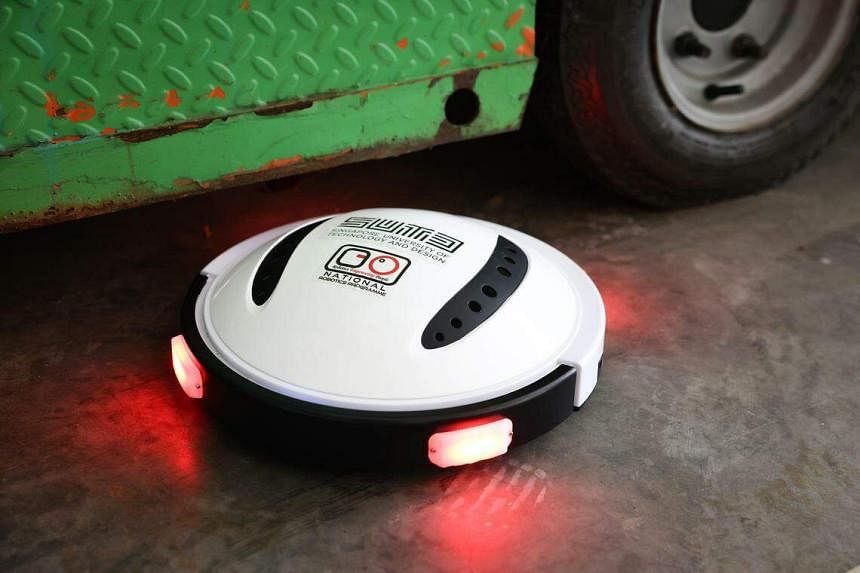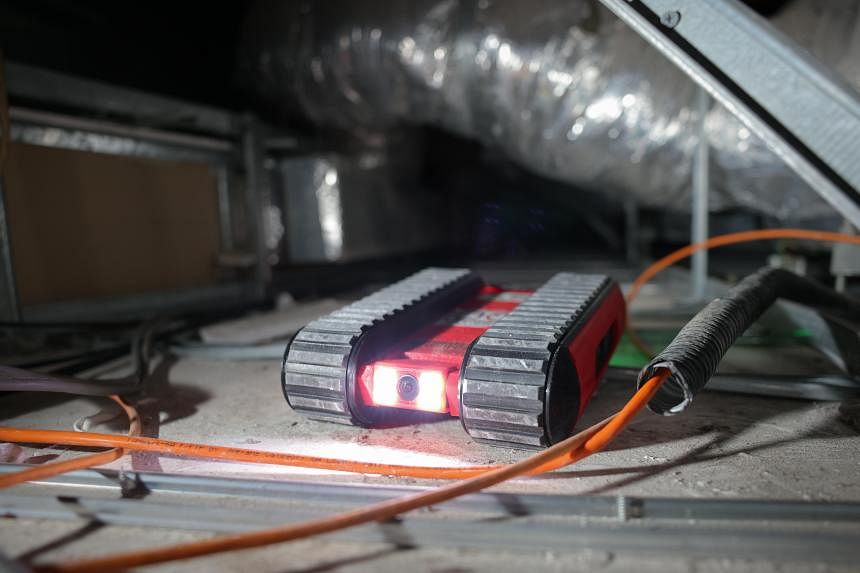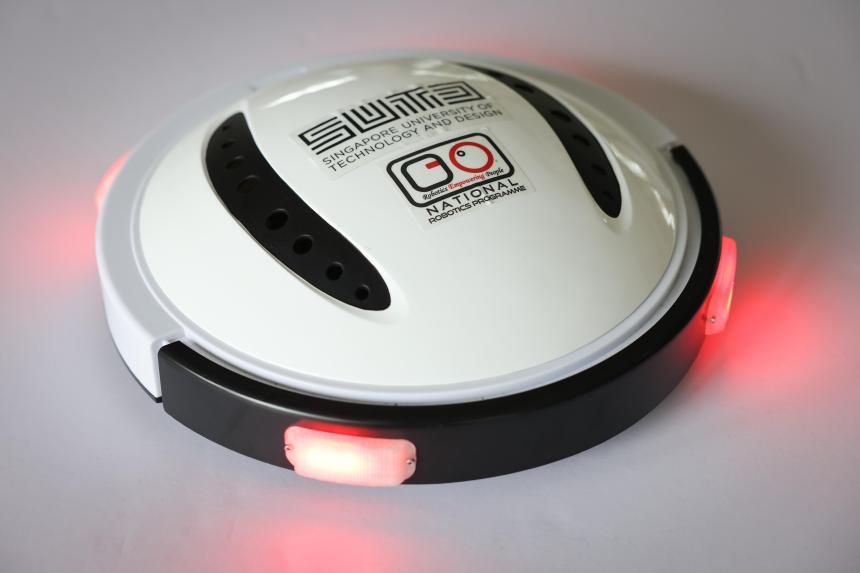SINGAPORE - With a new predator on his tail, Jerry has more than just Tom to worry about.
Robots here are turning into pest controllers and helping to detect rodents lurking in false ceilings and other areas out of sight.
The shoebox-size, radio-controlled bots are fitted with cameras on each end to stream footage from dark and cramped spaces.
With eyes glued to a screen, human pest controllers scan the footage for any sign of rat infestation, like gnaw marks or droppings, while guiding the robot over cables and other obstacles nestled in the ceiling layer.
Pest control company Verminator was an early adopter of the tech developed and built by the Singapore University of Technology and Design (SUTD).
The firm has been using the bots since 2020 to make the job easier for workers, who are getting harder to come by, as well as to help make it safer.
Verminator assistant director Brian Ong said the use of a robot means only one worker, instead of a pair, needs to be deployed to inspect false ceilings for their clients in each check, allowing the firm to tackle more jobs.
Commonly found in modern structures, false ceilings are installed below the main ceiling to allow lights and other electrical fixtures to be suspended from above, while hiding unsightly wires and pipes within them.
But the dark and cool layer also serves as an ideal home for pests like rats, which can wreak havoc by chewing through cables or spreading viruses.
It can take hours to inspect the area of the ceiling visible from each hatch, said Mr Ong, adding that a worker would have to climb a ladder, shine a torch and carefully look for signs of infestation, while another supports the ladder.
“It sounds simple, but in places like convention halls, the whole process can take half a day or longer,” he said. “The men also have to climb to very high places, so it is not always safe.”
His team has deployed the pest control bots to support all operations involving false ceilings, which account for at least half of their inspections in homes, offices and convention centres, among other locations.
“Robots can eventually help us to cover more ground in a shorter timeframe,” said Mr Ong. “It has always been challenging to get enough manpower across many industries, and it is the same with pest control.”
SUTD’s bots have also been used in a trial with Tampines Town Council.
Concerns about rat infestations were sparked when a video of a twitching rat lying on a tray at Tangs Market in Orchard emerged in November 2023, prompting the authorities to inspect stalls, common areas and the ceiling on the premises for signs of pest infestation.
Shopping mall and store operators are urged by the National Environment Agency (NEA) to have an effective pest control programme which includes practising good hygiene habits, adopting a proper refuse management system and engaging licensed pest control operators to prevent infestations.
Ceilings were among the areas prone to rat infestations that the NEA flagged in its guidelines for licensed operators, who should use special equipment like night vision cameras to look for signs of pests.
The inspiration to build robots for pest control came after hearing about the needs of the industry, said Professor Mohan Rajesh Elara from the SUTD team behind the robots.

In the works is another version of the robot equipped with artificial intelligence to detect what kind of rat is involved simply by scanning the droppings, said Prof Mohan.
“Pest controllers can tell the species of rat just by looking at the droppings; then they can use the right type of rodenticide to deal with the infestation,” he said.
Roof rats, or black rats, are among the most common rodents that burrow in enclosed spaces like false ceilings.
The SUTD team also developed a bot that looks like a Roomba vacuum cleaner to scare off snakes.

Named Naja, the robot wheels around designated locations and creates sharp vibrations while emitting a scent made from a mix of sulphur and garlic powder – a common snake repellent.
“Snakes are shy creatures, and they go to quiet areas where no one is around,” Prof Mohan said. “These vibrations and smells are enough to chase them away, keeping them at a safer distance from humans.”




